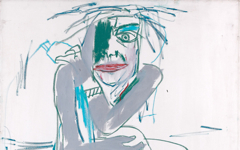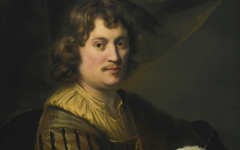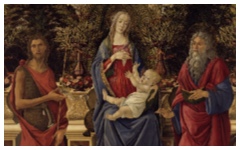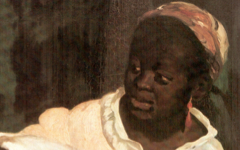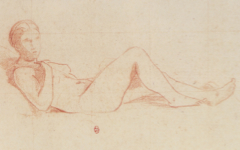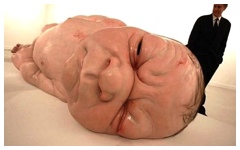Conception (Sexual and Mental)
The poet’s pen is in some sense a penis, wrote a literary critic. “[T]he patriarchal notion that the writer fathers his text just as God fathered the world is and has been pervasive in Western literary civilization.” That is how she expressed the common link between male writers and the female body in early modern Europe. The English poet Philip Sydney (1554-86) wrote in a sonnet that he was “great with child to speak, and helpless in my throes (child labour).” John Milton (1608-74), described as a “phallic poet extraordinaire”, also made analogies between the “issue of the brain” and “the issue of the womb.”{ref1}
All Articles (Alphabetical by Artist, then Title)
Is this merely a scene of everyday life or something more important?
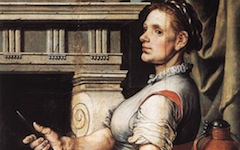
Aertsen’s Cook in front of the Stove (1559)
Altdorfer's scene of incest is an early example of a long tradition with very similar and surprising meaning

Altdorfer’s Lot and His Daughters (1537)
Remember a few general principles and you will find that the art of understanding art is much easier than you might magine
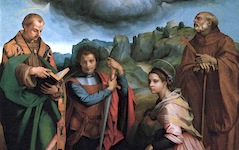
Andrea Del Sarto’s Madonna in Gloria (1530)
An artist's identification with God was as common in the 20th century as in the Renaissance
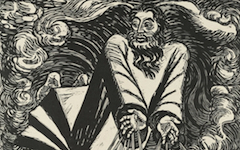
Barlach’s The First Day (1922)
See how Giovanni Bellini used a visual pun to pass on his meaning
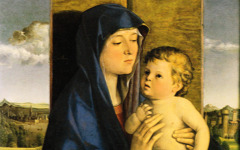
Bellini’s Madonna of the Pear (c.1485)
Unless you knew that there might be a self-portrait in this Reclining Nude, you'd probably never see it.

Boucher’s Reclining Nude (1730’s)
"Mistakes" in representing reality are cues to the scene's underlying meaning

Caravaggio’s Martyrdom of St. Ursula (1609-10)
Learn how additions to a painting's narrative often provide access to the composition's underlying meaning
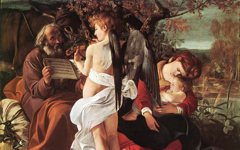
Caravaggio’s Rest on the Flight into Egypt (c.1597)
Find out how the colloquial term for a female rider inspired an artist
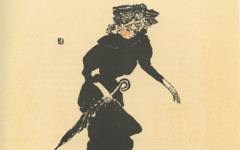
Courbet’s Woman in a Riding Habit or The Amazon (1856)
See how Durer shaped the Virgin and Child into the form of his own monogram
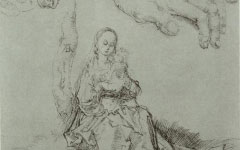
Dürer’s Virgin and Child (c.1491)
If you can't make a sense of an image beyond what it appears to be, keep looking until you can. Come back to it, time and again, until you do.

Degas’ At the Races in the Countryside (1869)
See how Degas subtly changed his copies after the Old Masters to fit his own (and art's) agenda
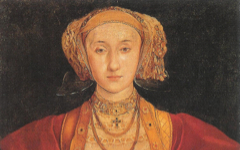
Degas’ Copy after Holbein’s Anne of Cleves (c.1860)
See how the meaning behind this image changes our entire understanding of Degas' oeuvre
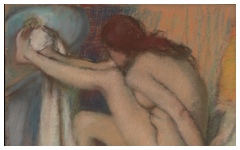
Degas’ Woman Drying Her Foot (1885-6)
Narrative paintings are meant to make sense. Take note of anything odd.
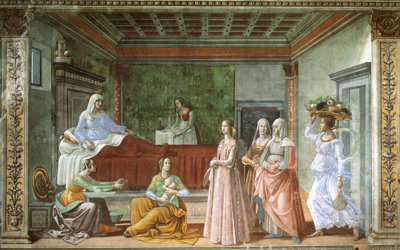
Ghirlandaio’s Birth of St John the Baptist (1486-90)
Even at 17, Giacometti understood the hidden meaning of art
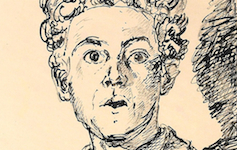
Giacometti’s Self-portrait with Brush (1918)
If you think like the artist and think inwards, all changes...
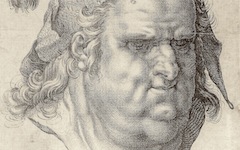
Goltzius’ Man Wearing a Tasseled Cap (1587)
With Mercury outfitted as a painter, the viewer can interpret this image confident that the subject is art
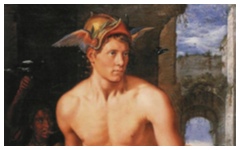
Goltzius’ Mercury (1611-13)
Think about who you are if, for instance, you are not yourself
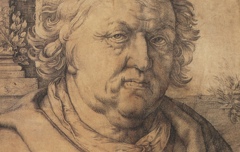
Goltzius’ Portrait of Jan Govertsz van der Aar as St. Luke (1614)
How tradition in art is more often based on forms than subject matter
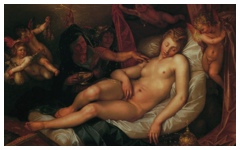
Goltzius’ Sleeping Danae… (1603)
What contemporary artists like Jasper Johns does is what great artists have always done. Those that do not will not last. A century from now they will be forgotten by all but historians.
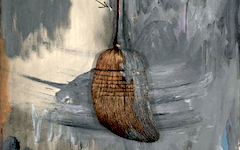
Jasper Johns’ Fool’s House (1964)
The universal features of Frida Kahlo's art are what links her to the canon, not the details of her private life
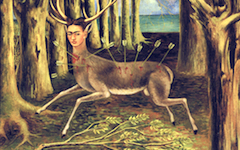
Kahlo’s The Wounded Deer (1946)
History and the politics of the moment never trumps self-knowledge and self-reference as the 'sine qua non' of art

Kollwitz’s “Down with Abortion Clause” Poster (1924)
The most crucial piece of information about the Mona Lisa missing from standard textbooks is that the proportions of the Mona Lisa’s face differ from an earlier version seen in X-rays but are similar to the artist’s own in a well-known self-portrait.

Leonardo’s Mona Lisa (c. 1503-7)
A famous but much maligned painting has more poetry in it than its critics think

Lord Leighton’s Flaming June (1895)
Find out how the viewer in this garden scene is really inside Manet's mind
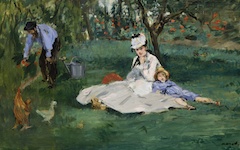
Manet’s Monet Family in the Garden (1874)
Joseph, worth only a cameo appearance in the Bible, is a major star in visual art. Cast as a narcoleptic, he falls asleep in one image after another without any art historian, to my knowledge, pausing to ask: Why does he sleep so much?
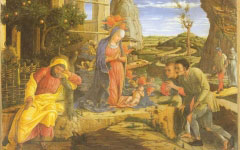
Mantegna’s Adoration of the Shepherds (c.1450-51)
Why did Picasso choose this painting for himself? What did he see in it?
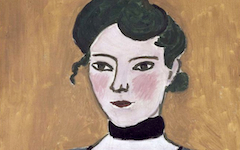
Matisse’s Marguerite (1906-7)
There is yet more meaning in the drawing as we see in Part 2 of this analysis
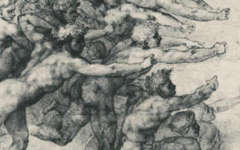
Michelangelo’s Archers Shooting at a Herm (c.1530) Part 2
There's probably more unseen in Michelangelo's Sistine Chapel than has ever been known....
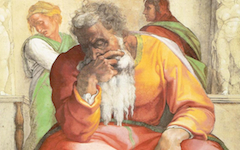
Michelangelo’s Sistine Ceiling: Jeremiah (c.1509-10)
See why Jonah is the most important figure in the chapel
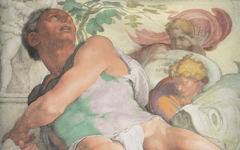
Michelangelo’s Sistine Ceiling: Jonah (1512)
Michelangelo's first great masterpiece is widely misunderstood. Like art in general, it is an expression of the creative moment.
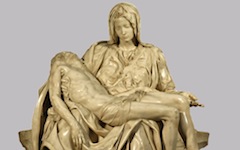
Michelangelo’s Vatican Pieta (1498-99)
Discover how you can unlock layers of meaning from a relatively simple composition
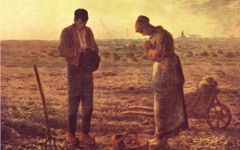
Millet’s The Angelus (1857-9) and other works
One way to make sense of Miró's abstractions is to remember, as ever, that 'every painter paints himself.'
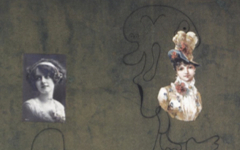
Miró‘s Drawing-Collage (1933)
If a self-portrait was collected by Picasso as this one was, there must be a reason beyond remembrance. It's our job to find out what.
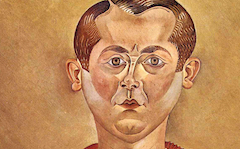
Miró‘s Self-portrait (1919)
Many were scandalized by this painting in the 1990's yet still missed the "real" scandal!
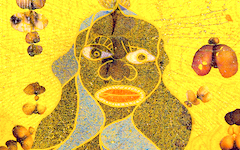
Ofili’s The Holy Virgin Mary (1996)
Two protagonists in one painting must both represent the artist. It's a given in art so it's your job to find out how.

Picasso’s Cat Catching a Bird (1939)
Not a particularly successful picture but an excellent learning tool

Picasso’s Portrait of Jacqueline (1965)
Just like Michelangelo's, Picasso's women are masculine too....here's how and why.
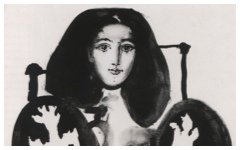
Picasso’s Woman in an Armchair (1948)
© Simon Abrahams. Articles on this site are the copyright of Simon Abrahams. To use copyrighted material in print or other media for purposes beyond 'fair use', you must obtain permission from the copyright owner. Websites may link to this page without permission (please do) but may not reproduce the material on their own site without crediting Simon Abrahams and EPPH.
